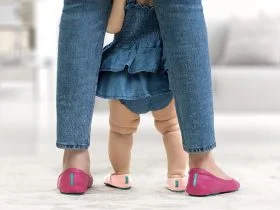Car accidents are a sobering reality that, unfortunately, can happen to anyone. When children are in the car, the stakes become significantly higher. Protecting your little ones during these unforeseen events should be a top priority for any responsible parent. This comprehensive guide will delve deeper into the six fundamental measures you can take to ensure the safety of your children during car accidents. From selecting the right car seat to teaching emergency procedures, we’ll cover all aspects of keeping your children safe.
Reader's Roadmap
Stay Informed About State Laws and Regulations
State laws and regulations governing child safety in vehicles can vary significantly. It’s vital to stay informed about your state’s specific requirements to ensure compliance and, more importantly, the safety of your child. These laws encompass not only the type of car seat your child should use but also details like age and height requirements. Familiarize yourself with the specific legal obligations in your state and understand that ignorance of the law is not a valid excuse.
Hiring an attorney for a car accident can be overwhelming, but it’s vital to have one that specializes in accidents involving children. Whether it’s the aggressive driving accident lawyer or the distracted driving accident attorney, choose one that has experience handling cases involving child passengers. If your child has been involved in an accident due to someone else’s negligence, an experienced attorney will help you navigate the complexities of personal injury law and fight for the compensation your child deserves.
Keep in mind that these laws can change, so it’s essential to periodically check for updates and stay current with the latest recommendations. Ensuring you’re well-informed about state regulations is not only about adhering to the law but also about taking every possible step to guarantee your child’s safety.
Choosing the Right Car Seat: A Foundation for Safety
Selecting the right car seat is not just a matter of convenience; it’s a matter of life and death. The choice of car seat hinges on several factors, including the child’s age, weight, and height. Infants and toddlers, for instance, typically require rear-facing seats, while older children need forward-facing ones. Booster seats and seat belts are essential for those transitioning into adult seats.
There’s more to the selection process than meets the eye. Ensure that the car seat you choose complies with your state’s regulations and recommendations. The information provided by the car seat manufacturer is your guiding light – always read the instructions meticulously, and adhere to the weight and height limits stipulated for that particular seat.
If you’re unsure about the intricacies of car seat selection and installation, many child passenger safety technicians, often available at local fire departments or through community resources, offer free inspections. They can help you make certain that your child’s safety isn’t compromised due to improper equipment use.
Understanding the Importance of Rear-Facing Seats for Infants
Rear-facing car seats are of paramount importance when it comes to safeguarding infants during car travel. These seats are meticulously engineered to cradle and cocoon your baby’s delicate body, providing exceptional head and neck support in case of a sudden stop or accident.
The American Academy of Pediatrics (AAP) underscores the significance of rear-facing seats, recommending that children stay in this position for as long as possible, preferably until they reach the age of two. But don’t forget to pay close attention to the weight and height limits specified by the car seat manufacturer. This is vital in determining when to make the transition to a forward-facing seat, an upgrade that shouldn’t be rushed.
Proper Installation: The Backbone of Child Car Seat Safety
Even if you’ve chosen the most advanced car seat on the market, it’s effectively rendered useless if it’s not installed correctly. This is where parental diligence and responsibility come into play.
Begin by reading the manufacturer’s instructions with painstaking care. Every car seat model may have unique installation guidelines. Whether you’re using the LATCH system or the seatbelt to secure the car seat, ensure that it’s snug and stable. Avoid any excessive wobbling or give. A properly installed car seat should feel like a natural extension of your vehicle, not an afterthought.
If the prospect of installation feels daunting, you’re not alone. Many parents find it challenging. Luckily, various resources are at your disposal, offering guidance and even professional assistance. In many communities, local fire departments or certified child passenger safety technicians are available to help you not only with installation but also to provide peace of mind that your child’s safety is maximized.
Regular Maintenance and Inspection
Car seats, like any piece of equipment, require regular maintenance to ensure their reliability. Over time, straps and buckles can become damaged or compromised, posing a significant risk to your child’s safety.
Perform regular checks for wear and tear. If you notice any fraying straps, damaged buckles, or other signs of deterioration, replace the affected parts immediately. Remember that even a seemingly minor issue can have severe consequences during a collision.
Stay informed about recalls or updates for your specific car seat model. Manufacturers issue recalls to address potential safety concerns, and being vigilant about these announcements is critical. By staying on top of maintenance and inspection, you can rest assured that your child’s safety is never compromised due to equipment issues.
Educate Your Child: Emergency Procedures and Safety Rules
Educating your child on emergency procedures is an often overlooked aspect of car safety. Yet, it’s a crucial part of preparing your child for unforeseen events.
Teach your child how to undo their seatbelt, unlock the car doors, and exit the vehicle safely in case of an emergency. Emphasize the importance of remaining calm and not running onto the road, which can be just as dangerous as the initial accident.
One effective way to reinforce this knowledge is through practice. Simulate emergencies and guide your child through the necessary steps. While it might feel like a daunting task, this preparation can prove invaluable in a real emergency, ensuring your child’s safety and instilling a sense of confidence.

In conclusion, car accidents involving children are harrowing scenarios no parent wants to contemplate. However, by following these six comprehensive steps, you can dramatically reduce the risks and enhance your child’s safety during a car crash. The careful selection of a car seat, proper installation, regular maintenance, education on emergency procedures, and staying updated on state laws are all vital elements of ensuring your child’s well-being. Your child’s safety is worth every ounce of effort, and this guide serves as your roadmap to protect what matters most.







Leave a Reply
View Comments